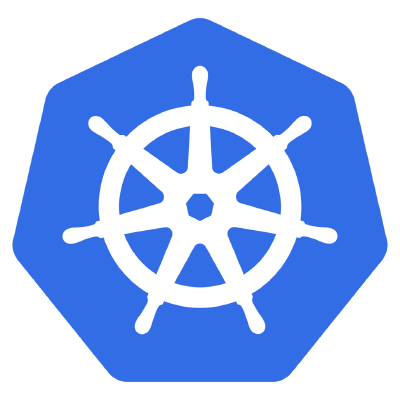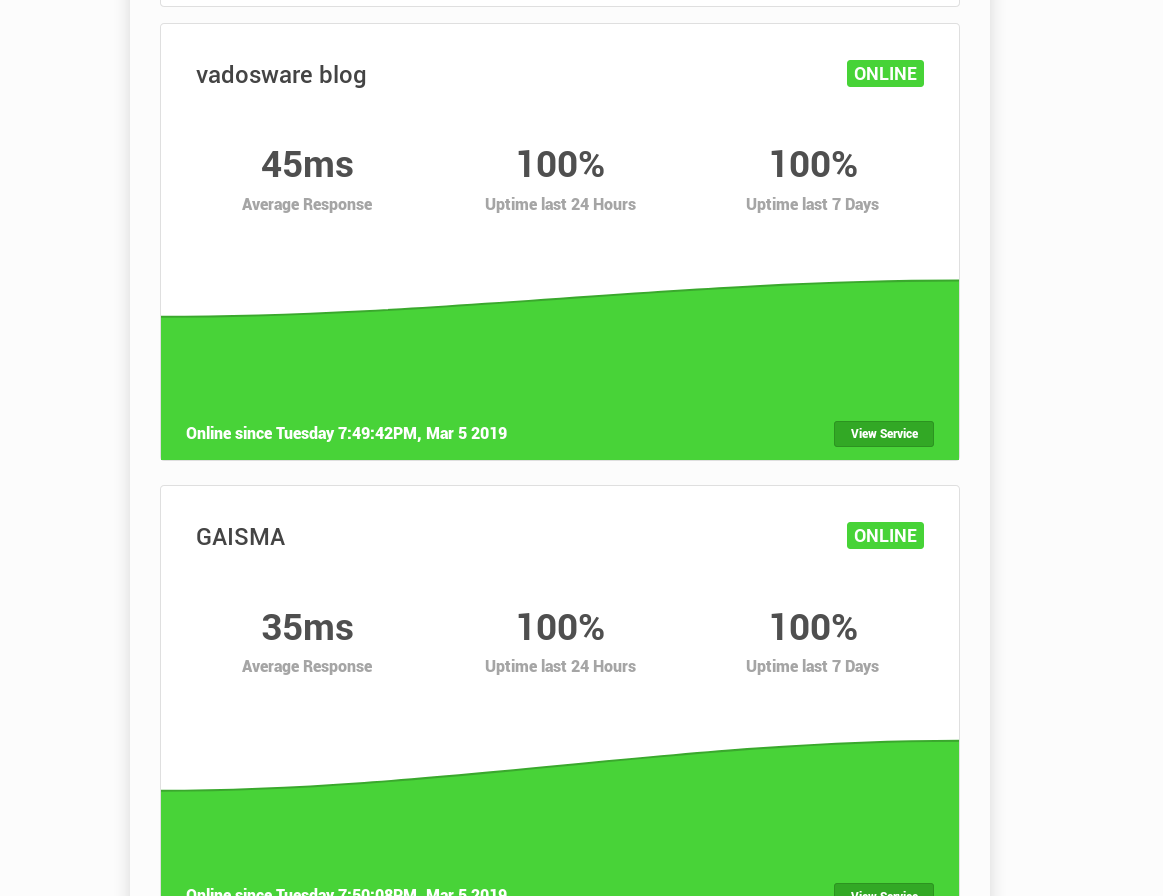 +
+

tl;dr - I set up a single instance of statping along with configuration to monitor uptime for a few sites I maintain.
I’ve written a bunch of times in the past about my k8s cluster (most posts are categorized under “k8s” or “kubernetes”), but during a recent rebuild of my cluster I forgot to put a rather important back up. It’s pretty disappointing that this happened at all – I went through the hard work of making all my deployments single-command (utilizing my still-possibly-a-terrible-idea makeinfra pattern), but I don’t have all the projects and more infrastructure related concerns in the same respository, which meant I had to go into each individual -infra repository for my other projects and run make deploy or something similar. For example, cert-manager (fantastic tool for automating certificate management on your cluster) is in the bigger “infrastructure” (not tied to any project), and projects like this blog have their own <project>-infra repositories.
Unfortunately the project I forgot to redeploy was actually the landing page to one of my businesses – gaisma.co.jp, and it actually wasn’t up when a client went to look at it. Of course, I had no idea the site was down, so when I pointed them to it they noted that it was down. Quite an unwelcome surprise!
So there are a few things I can do to stop this from happening again:
git submodule the other projects into the main infra repoWhile the first solution is a good one (and probably something I should do period), the second one is what this post is going to be about. I’m going to set up statping which is a really nice looking self-hostable tool for simple uptime checks on one or more websites.
The real usefulness comes from automated downtime emails, which I’m going to hook up with my Gandi-provided free email and use to email myself when any sites go down.
The deployment is pretty simple – I only need one instance of statping for the whole cluster (so no DaemonSet), It’s relatively “stateless” (so no StatefulSet), and I really only need one replica (so technically I could go with a Pod). I do want to be able to visit some status.<domain>.<tld> endpoint from the web and see everything at a glance, so I’ll need a Service and an Ingress.
Here’s what that looks like:
statping/pvc.yaml
---
apiVersion: v1
kind: PersistentVolumeClaim
metadata:
name: statping-pvc
namespace: monitoring
labels:
app: statping
tier: monitoring
spec:
storageClassName: openebs-jiva-non-ha
accessModes:
- ReadWriteOnce
resources:
requests:
storage: 100Mi
statping/deployment.yaml
---
apiVersion: apps/v1
kind: Deployment
metadata:
name: statping
namespace: monitoring
spec:
replicas: 1
selector:
matchLabels:
app: statping
tier: monitoring
template:
metadata:
labels:
app: statping
tier: monitoring
spec:
containers:
- name: statping
image: hunterlong/statping:v0.80.51
resources:
limits:
memory: 128Mi
cpu: 100m
ports:
- containerPort: 8080
volumeMounts:
- mountPath: /app
name: statping-config
volumes:
- name: statping-config
persistentVolumeClaim:
claimName: statping-pvc
statping/svc.yaml
---
apiVersion: v1
kind: Service
metadata:
name: statping
namespace: monitoring
spec:
selector:
app: statping
tier: monitoring
ports:
- protocol: TCP
port: 80
targetPort: 8080
statping/ingress.yaml
---
apiVersion: extensions/v1beta1
kind: Ingress
metadata:
name: statping
namespace: monitoring
annotations:
ingress.kubernetes.io/ssl-redirect: "true"
ingress.kubernetes.io/limit-rps: "20"
ingress.kubernetes.io/proxy-body-size: "10m"
kubernetes.io/tls-acme: "true"
kubernetes.io/ingress.class: "traefik"
spec:
tls:
- hosts:
- subdomain.domain.tld
secretName: statping-tls
rules:
- host: subdomain.domain.tld
http:
paths:
- path: /
backend:
serviceName: statping
servicePort: 80
Another project that I was hoping to use with this is postmgr (which is almost at version 0.1.0!) – I created postmgr to make it easier to run well-configured Postfix servers but right now postmgr isn’t quite ready for dogfooding (it could stand to be a little more secure/featureful), so for now I’m deferring so some other cluster-external SMTP server (Gandi in this case).
After some make executions (which ran kubectl apply -fs), and some initial set up I was greeted with a nice uptime dashboard:

Check out more about statping at the Github Repo (thanks to hunterlong and all the contributors for making this awesome tool)! I also filed an issue asking about some documentation on config.yml, since I really wanted to be able to pre-populate the config.yml file with a configmap.
This post was a quick one but hopefully it shows how easy it is to deploy services with k8s and achieve some business value.